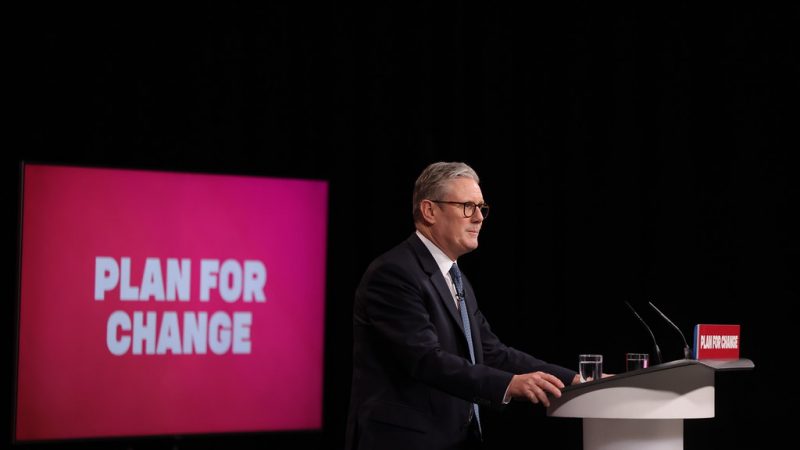
Spending reviews are a big moment in any government’s life. They set the spending totals for the following years so departments and others know what they have to play with. They set the parameters within which grand policy commitments will actually be enacted. But more than that, they set the tone for what the government thinks is important and what is not, and give a big clue as to how it seeks to govern. Money is not everything of course, but it is a hell of a lot.
In announcing her first spending review on 11 June – a multi-year affair that will cover the bulk of this parliament – Chancellor of the Exchequer Rachel Reeves will therefore be setting the scene for this Labour government’s success or failure: no pressure then.
We know that this is not going to be easy. The economic inheritance was pretty miserable and the fiscal one even more so, with debt very high in relation to GDP and the interest payments on that debt currently gobbling up money that everyone would rather see used elsewhere. Those debt levels also make the markets a bit nervous. So money is tight and keeping within the Chancellor’s fiscal rules make it even more so, as do the decisions to not increase the key revenue raising taxes like income tax, employees’ National Insurance and VAT.
Prioritising your fixed pot of resource
In such circumstances you have to decide where to spend your fixed pot of resource. You can – and she undoubtedly will – prioritise certain areas like health, but that means giving less to other areas. You can go for cutting back on annually managed expenditure (‘AME’) – mainly welfare – to protect departmental spending, but the impacts there can be felt by the very poorest and will cause unrest on the backbenches.
And then there are new demands in areas like defence, a necessary investment given world events, but which can eat up valuable funds without the average family seeing much concrete benefit in terms of their standard of living or the quality of public services.
Naturally all stakeholders and some departments have been making the case for spending in their area very loudly – often articulated in terms of the worst possible thing that could happen were funding to be cut – as we come to the final decisions. Hence, for example, hearing a lot in recent days from some police leaders about the impossibility of meeting core public safety objectives without more money.
‘Where the money goes will tell us a lot about the government’s priorities’
Undoubtedly too, some of this lobbying will have been ‘round the back’ to No 10 and the Prime Minister to see if he and his team can be convinced that the politics of keeping certain groups happy should go above the Treasury’s need to keep the finances tight. While the Chancellor announces the spending review as a fiscal measure, it is ultimately a highly political exercise and should be seen as an announcement with the Prime Minister’s approval behind it.
So looking to see where in the end the money goes tells us a lot about the government’s priorities and where it wants to have the biggest impacts: economically, socially and politically.
It will be fascinating to see where the government’s five national missions play into all of this. These were given a lot of air time in the run up to the general election, and so we would expect at least for the spending review to be presented as having been framed around the five missions. But working out if the missions have really driven the allocation decisions – and what has been left out as a consequence of not being ‘mission critical’ – will tell us to what extent Keir Starmer’s administration really is committed to the “new way of doing government” it promised in its manifesto.
At FGF we have argued that the principles and behaviours that underpin the mission-driven approach are the right way to organise and transform the way government works so that it can deliver progressive outcomes in the current context. As our Director Nathan Yeowell has argued, we think Starmer needs to double down on that approach – which may mean redefining the missions to ensure they reflect a world that has changed even since he was elected last year.
But if through set-piece events like next week’s spending review it becomes obvious to officials and stakeholders that they are not central to decision making and funding, then it will be hard to have them as an organising concept going forward.
So the spending review will reveal not only who gets what, but how this government is going to govern over the next four years. We await it with interest.
Subscribe here to our daily newsletter roundup of all things Labour – and follow us on Bluesky, WhatsApp, Threads, X or Facebook.
- SHARE: If you have anything to share that we should be looking into or publishing about this story – or any other topic involving Labour– contact us (strictly anonymously if you wish) at [email protected].
- SUBSCRIBE: Sign up to LabourList’s morning email here for the best briefing on everything Labour, every weekday morning.
- DONATE: If you value our work, please chip in a few pounds a week and become one of our supporters, helping sustain and expand our coverage.
- PARTNER: If you or your organisation might be interested in partnering with us on sponsored events or projects, email [email protected].
- ADVERTISE: If your organisation would like to advertise or run sponsored pieces on LabourList‘s daily newsletter or website, contact our exclusive ad partners Total Politics at [email protected].




More from LabourList
‘Like changes to winter fuel allowance, lifting the two-child cap may be easy in Parliament — and risky everywhere else’
‘No racist is going to make me feel I don’t belong’: Shabana Mahmood on resilience, faith and public service
Delivering in Government: your weekly round up of good news Labour stories